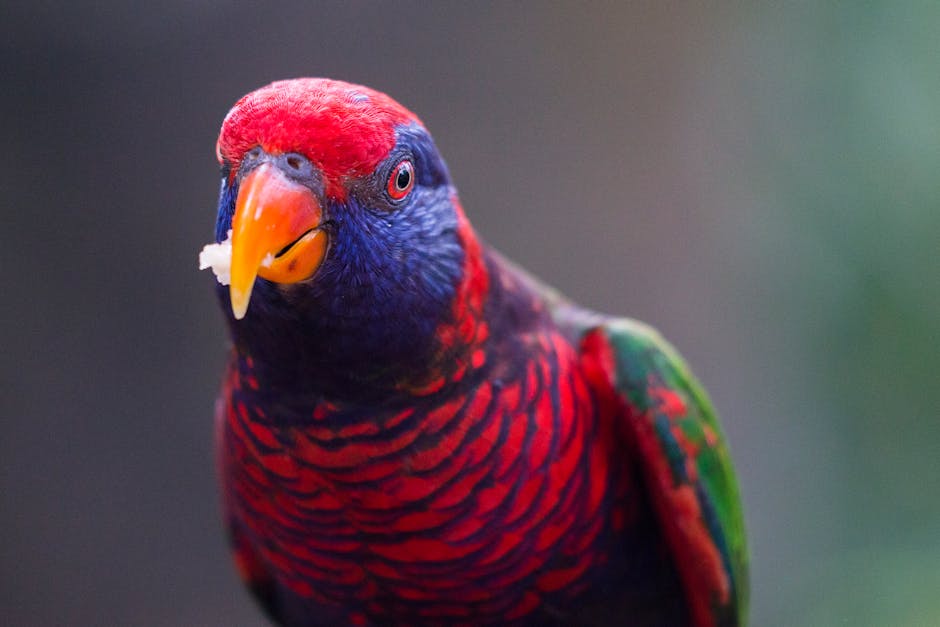Introduction: Understanding Avian Reproduction

Birds, fascinating creatures of the sky, have a unique reproductive process that distinguishes them from mammals. While the term “pregnant” is not technically accurate for birds, as they lack a uterus and do not carry embryos internally, it is sometimes colloquially used to describe their reproductive state. In this article, we will explore the physical signs, behavioral changes, and diagnostic tests that can help determine if a bird is preparing to lay eggs or is in a reproductive state.
It is important to note that the appearance of a pregnant bird can vary among species and individuals. During the breeding season, female birds may exhibit physical changes that indicate the presence of developing eggs. One noticeable sign is a swollen or enlarged abdomen, which can vary in size depending on the species and stage of egg development.
In addition to physical signs, observing a bird’s behavior can provide valuable insights into its reproductive state. Changes in eating habits, activity level, and social interaction can indicate that a bird is preparing to lay eggs. For example, increased territorial behavior or nest-building activities are common as birds ready themselves for reproduction. These behavioral changes serve as important clues in determining a bird’s reproductive state.
While physical signs and behavioral changes can offer indications of a bird’s reproductive state, it is crucial to consult with avian experts or ornithologists specializing in the particular species in question. Not all female birds exhibit noticeable physical changes when preparing to lay eggs, and the visual appearance of changes may vary. Avian experts can provide specific information about the species and offer valuable insights into the reproductive processes of birds.
In the following sections, we will delve deeper into the physical signs to look for in a pregnant bird, including egg production, weight gain, and nest building. We will also explore the behavioral changes that may occur, such as alterations in eating habits, activity level, and social interaction. Additionally, we will discuss diagnostic tests, such as X-rays, ultrasounds, and blood tests, that can provide further confirmation of a bird’s reproductive state. Finally, we will emphasize the importance of consulting with a veterinarian specializing in avian medicine to accurately determine if a bird is pregnant or in a reproductive state.
Stay tuned as we unravel the intriguing world of avian reproduction and provide valuable insights on how to identify if a bird is preparing to lay eggs or is in a reproductive state.
Physical Signs to Look For: Egg Production, Weight Gain, and Nest Building

Egg Production (2.1): Female birds have the remarkable ability to lay eggs, a clear indication of pregnancy in avian species. Look for signs of nesting behavior, such as spending increased time in the nest box or repeatedly entering and exiting it. Additionally, inspect potential locations where the bird may be laying eggs to check for the presence of eggs. Keep in mind that not all bird species lay eggs, so other signs should be considered for these exceptions.
Weight Gain (2.2): Monitoring a bird’s weight can provide valuable insights into its reproductive state. A pregnant bird may experience weight gain due to factors such as egg development or changes in hormone levels. Use a suitable scale to weigh the bird regularly and record any noticeable increase in weight over time. Remember that weight gain can also occur due to other factors, so consider it alongside other physical signs for an accurate assessment.
Nest Building (2.3): Nest building is a natural behavior exhibited by many bird species as they prepare for egg-laying and raising offspring. Observing nest building activities can be a strong indicator of a bird’s pregnancy. Look for the bird collecting materials such as twigs, leaves, feathers, or other suitable nesting materials. Pay attention to the bird’s behavior around the chosen nesting area, as they may engage in rearranging or constructing a nest structure. Signs of territorial behavior near the nest can also indicate the bird’s protective instincts as a result of pregnancy.
By paying attention to egg production, weight gain, and nest building behaviors, caretakers can gather important physical signs to determine if a bird is pregnant. These signs serve as valuable indicators of the bird’s reproductive state and can guide appropriate care and preparation for the potential arrival of offspring.
Observing the Bird’s Behavior: Changes in Eating Habits, Activity Level, and Social Interaction

Birds, like any other animal, undergo behavioral changes during pregnancy. By observing their eating habits, activity level, and social interaction, you can gather valuable clues to determine if a bird is pregnant. However, it’s important to remember that these behavioral changes alone may not be definitive proof of pregnancy. Consulting a veterinarian or avian expert is advised for a proper diagnosis.
Changes in Eating Habits

During pregnancy, birds may experience noticeable changes in their eating habits. One common change is an increase in food consumption. Pregnant birds often exhibit a larger appetite and consume more food than usual. They may voraciously eat and exhibit a preference for specific types of food, particularly those high in protein or calcium, which are essential for egg development and laying.
Additionally, pregnant birds might display alterations in their feeding frequency. They may eat more frequently throughout the day or have irregular feeding patterns compared to their normal routine. These changes in eating habits can be indicators of pregnancy, but they should be considered alongside other signs to reach a more accurate conclusion.
Activity Level
Another aspect to observe is the activity level of the bird. Some pregnant birds may exhibit reduced energy levels and become less active than usual. They might spend more time resting or perching rather than engaging in vigorous activities. This decrease in activity could be attributed to the physiological changes occurring within their bodies as they prepare for the upcoming egg-laying process.
Furthermore, depending on the bird species, pregnant birds may limit their flight. They may avoid flying extensively or exhibit shorter flight durations. This behavior can be a protective measure to prevent potential harm to the developing eggs or to conserve energy.
Social Interaction

Pregnant birds may display changes in their social behavior and interaction with others. One common change is increased aggression. As their hormones fluctuate during pregnancy, some birds become more territorial and exhibit aggressive behaviors towards other birds or even humans. This aggression is a defense mechanism to protect their nesting territory and future offspring.
Nest-building behavior is another notable social change. Certain bird species exhibit nest-building behaviors during pregnancy as they prepare for egg-laying and incubation. They may gather nesting materials, construct or refurbish nests, and display meticulous nesting behaviors to ensure a suitable environment for their eggs.
Moreover, pregnant birds may seek solitude and display a preference for privacy. They may isolate themselves from their flock and actively seek out secluded areas for nesting or resting. This behavior allows them to create a safe and secure environment for their future offspring.
In conclusion, observing changes in eating habits, activity level, and social interaction can provide valuable insights into a bird’s potential pregnancy. However, it’s crucial to remember that individual variations exist among bird species, and these behavioral changes should be considered alongside other diagnostic methods. Consulting a veterinarian or avian expert is essential for an accurate diagnosis and appropriate care.
Diagnostic Tests: X-rays, Ultrasounds, and Blood Tests

When it comes to determining bird pregnancy, diagnostic tests play a crucial role in providing accurate and reliable results. Veterinarians utilize various methods to assess the reproductive status of birds, including X-rays, ultrasounds, and blood tests.
X-rays

X-rays are commonly employed for detecting pregnancy in birds. This imaging technique enables veterinarians to obtain a clear picture of the bird’s internal structures, including the presence and number of eggs within the reproductive tract. However, caution should be exercised with X-rays due to the potential harm of repeated radiation exposure to the bird’s health. Therefore, this method should be used sparingly and under the guidance of a veterinarian.
Ultrasounds

Ultrasound imaging is another valuable tool for diagnosing bird pregnancy. This non-invasive technique involves using high-frequency sound waves to create real-time images of the bird’s reproductive organs. Ultrasounds provide veterinarians with visual information about the presence of eggs, the development of embryos, and even the detection of embryonic heartbeats. Unlike X-rays, ultrasounds are considered safe for birds and offer valuable insights into the stage of pregnancy and the overall health of the developing embryos.
Blood Tests
Blood tests serve as an additional diagnostic tool for determining bird pregnancy. By analyzing hormonal levels in a bird’s bloodstream, veterinarians can gain insights into the reproductive status of the bird. During pregnancy, certain hormones like progesterone and estradiol undergo fluctuations that can be measured through blood analysis. However, it’s important to note that hormonal changes can also occur due to factors other than pregnancy, such as the bird’s reproductive cycle, stress, or disease. Therefore, blood tests should be interpreted in conjunction with other diagnostic methods to ensure accurate results.
It’s essential to recognize the significance of consulting a veterinarian when considering the possibility of bird pregnancy. These professionals possess the expertise and knowledge to accurately interpret diagnostic test results and provide appropriate guidance for the bird’s care.
In the next section, we will explore the importance of veterinary involvement in determining whether a bird is pregnant or not.
The Importance of a Veterinarian in Determining Bird Pregnancy

Determining if a bird is pregnant can be a challenging task as they lack obvious external signs of pregnancy like mammals. Consulting an avian veterinarian who specializes in avian health and reproduction is crucial for accurate assessment and guidance. Avian veterinarians play a vital role in diagnosing and confirming pregnancy in birds. They possess comprehensive understanding of avian reproductive physiology and utilize various diagnostic techniques to determine pregnancy.
Observing Behavioral and Dietary Changes

While birds may not display obvious physical signs of pregnancy, there are subtle changes that can indicate potential pregnancy. Observing a bird’s behavior and dietary habits can provide valuable clues. Pregnant birds may exhibit increased territoriality, aggression, nesting behavior, and become more protective of their nesting area. They might also show signs of brooding or egg-laying behavior. Changes in dietary habits, such as increased food consumption or preferences for certain types of food, may also be observed.
Hormonal Fluctuations and Diagnostic Techniques
Hormonal changes can occur during pregnancy in birds, but measuring hormone levels alone is not a reliable method to determine pregnancy. Avian veterinarians employ various diagnostic techniques to confirm pregnancy. X-rays can detect the presence of eggs within a bird’s body, providing definitive evidence of pregnancy. Ultrasounds can visualize eggs or assess reproductive changes, while blood tests can measure hormone levels or detect specific proteins associated with pregnancy.
Consulting a Veterinarian and Avoiding Assumptions
If you suspect a bird is pregnant, it’s crucial to consult a veterinarian who specializes in avian care. They have the expertise to conduct diagnostic tests and provide accurate information regarding the bird’s condition. Avoid jumping to conclusions and assuming the bird is pregnant based solely on physical or behavioral changes. Relying on professional veterinary advice will help accurately identify the bird’s reproductive status.
Providing Appropriate Care and Monitoring Health

If the veterinarian confirms the bird’s pregnancy, they will provide specific instructions on how to care for the bird throughout the pregnancy. This may include dietary adjustments, providing a suitable nesting area, and creating a stress-free environment. Regular monitoring of the bird’s health and behavior is important, and any concerns should be promptly addressed with the veterinarian. Regular check-ups and communication with the veterinarian will help ensure the bird’s health and detect any potential issues early on.
Being Prepared for Potential Complications

While most bird pregnancies proceed without complications, it’s important to be aware of potential issues that can arise. Egg-binding, where an egg becomes stuck in the reproductive tract, and calcium deficiencies are common complications. Educate yourself about these possibilities and be prepared to act swiftly if any complications occur. Prompt veterinary attention can make a significant difference in the bird’s well-being and survival.
By following these guidelines and working closely with a knowledgeable veterinarian, you can provide the best possible care for a bird suspected of being pregnant. Remember, professional advice is crucial to accurately assess the bird’s condition and ensure a safe and healthy reproductive experience.
Frequently Asked Questions
Q: How can you tell if a bird is pregnant?
A: Unlike mammals, birds do not exhibit obvious external signs of pregnancy. However, you can look for physical signs such as swollen or enlarged abdomen, nesting behavior, weight gain, and changes in eating habits. Consulting a veterinarian or avian expert is advised for an accurate diagnosis.
Q: Do all bird species lay eggs?

A: No, not all bird species lay eggs. Some bird species, such as the kiwi and the cassowary, do not lay eggs. Therefore, it is important to consider other signs and consult with avian experts to determine the reproductive state of a bird.
Q: Can changes in behavior indicate bird pregnancy?
A: Yes, changes in behavior can provide valuable clues about a bird’s potential pregnancy. Look for alterations in eating habits, activity levels, social interaction, nest-building behavior, and territoriality. However, these behavioral changes should be considered alongside other diagnostic methods for a more accurate assessment.
Q: What diagnostic tests can determine bird pregnancy?

A: Veterinarians use various diagnostic tests to determine bird pregnancy, including X-rays, ultrasounds, and blood tests. X-rays can detect the presence of eggs, ultrasounds provide visual information about the reproductive organs and embryos, and blood tests measure hormonal changes associated with pregnancy.
Q: Why is it important to consult a veterinarian for bird pregnancy?
A: Consulting a veterinarian who specializes in avian health and reproduction is crucial for accurate assessment and guidance. Avian veterinarians possess the expertise to interpret diagnostic test results and provide appropriate care for the bird. They can also detect and address any potential complications that may arise during the pregnancy.

Leave a Reply